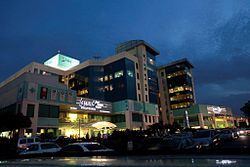



Medical tourism in India is a growing sector within the country's economy. In 2022, India's medical tourism sector was estimated to be worth US$9 billion. [1] Approximately 2 million patients visit India each year from 78 countries for medical, wellness and IVF treatments, generating $6 billion for the industry which is expected to reach $13 billion by 2026 and is backed by the Indian government's Heal in India initiative. [2] According to a report from 2019 by the Federation of Indian Chambers of Commerce and Industry and Ernst & Young, most of the medical patients arrivals in India were from Southeast Asia, Middle East, Africa, and SAARC region. [3] India also receives significant number of medical patients from Australia, Canada, China, Russia, the United Kingdom, and the United States. [4] The city of Chennai has come to be known as the healthcare capital of India.
Contents
- Attractions
- Advantages
- Cost
- Quality of care
- Ease of travel
- Language
- Medical statistics
- See also
- References
- Further reading
To encourage applications and ease the travel process for medical tourists, the India government has expanded its e-tourism visa regime in February 2019. The maximum duration of stay under this visa is 6 months. [5] Since 30 August 2019, foreigners can receive any medical treatment in India with the exception of organ transplants without a medical visa. [3]
In Aug 2023, the Government of India's Ministry of Home Affairs has announced the creation of the Ayush Visa category for foreign nationals at promoting travel healthcare in India and also and also tech-savvy companies are now stepping in to address this gap, offering online medical tourism in India. [6]
